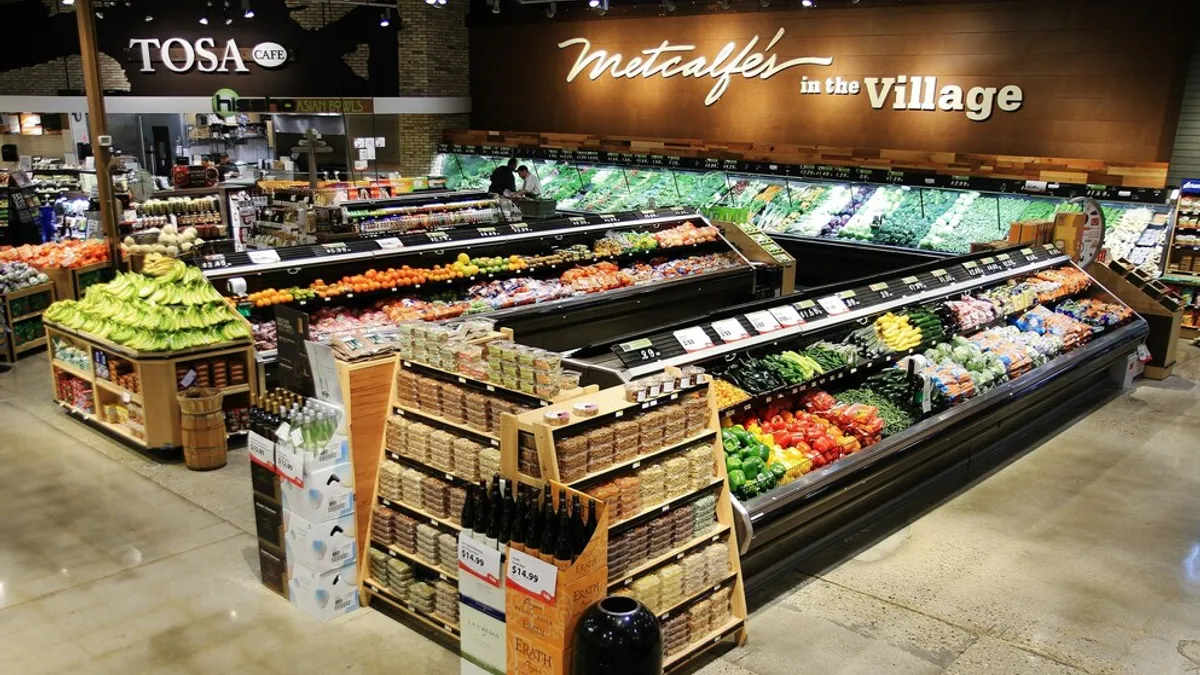In recent years, the landscape of grocery stores has changed dramatically due to the rise of online shopping during and post-pandemic. In early 2020, 63% of shoppers made the majority of their common grocery-item purchases in-store — and today, that number has dropped to 44% of shoppers.
With online shopping becoming more frequent, many retailers are missing opportunities to connect in-person with their customers, thus making it more challenging to establish personal connections with them. Online shopping offers convenience and value, but it also relegates a retailer’s relationship with a customer to one based exclusively on a transaction. And often, with third-party partners managing their e-commerce solution, retailers relinquish their customer relationship to that third party. This limits a retailers’ ability to connect with customers in a way that inspires emotional connection and loyalty.
So what’s the best way to establish relationships with consumers and move them back in-store? Make every in-store visit count by offering exciting products, an extensive Fresh food department — including cheese, meat and seafood, bakery, bulk, and deli — and unique experiences that help create delight and recapture the personal connection between retailers and consumers.
“Retailers work hard to connect their customers to their brand, their culture, and their mission,” said Ben Friedland, a 12-year retail marketing veteran who has worked for Whole Foods Market, Lucky’s Market, and currently, KeHE Distributors®. “They do this by hosting events in their café spaces, sharing stories about their products and those who produce them, and investing in their employees to become masters in customer service and the art of merchandising."
These strategic investments made by retailers provide access to one-of-a-kind offerings and experiences that compel shoppers — many of whom still prefer to purchase Fresh product in-person — to engage in a sensory experience unique to that retailer.
In addition to Fresh foods, getting consumers back in-store can also be achieved through dynamic displays and unique experiences that allow consumers to learn about the origins of the products they are buying. Consumers can gain insights into the specific regions where their food comes from and learn more about farmers’ and manufacturers’ passion, craft, heritage, and community. This is especially true for Fresh foods because the in-store experience cannot be replaced — whereas center-aisle shopping is harder to differentiate and easier to purchase online.
One more way brick-and-mortar retailers can outshine their online counterparts is by training employees to be an extension of the retailer and the brands on the shelves. Employees are key to helping consumers find old favorites and discover new products — something online retailers can never fully replace. Suggestions made by an employee who has experienced the product will carry more weight than a suggestion made by an algorithm.
For instance, butchers and seafood mongers can be trained to engage with consumers to get their products cut to their preferred specifications. Bakeries can be designed to give off aromatics that make consumers feel nostalgic and hungry. Delis can be displayed in a way that lets consumers shop with their eyes (and their taste buds). And, cheese departments, through merchandising and employee training, can help guide consumers to build a charcuterie board based on a specific flavor profile.
The bottom line is, cooking is fun, eating is fun, and retailers have the passion, experience, and ability to make food shopping fun too. Most importantly, curating a strong Fresh food assortment can allow retailers to create an environment that surprises and delights their customers, while ensuring a differentiated experience not soon duplicated by their competitors, or in an online environment.
To learn about KeHE’s new Fresh Marketplace and get a sneak peek of the Fresh catalog, visit kehefreshmarketplace.com.










